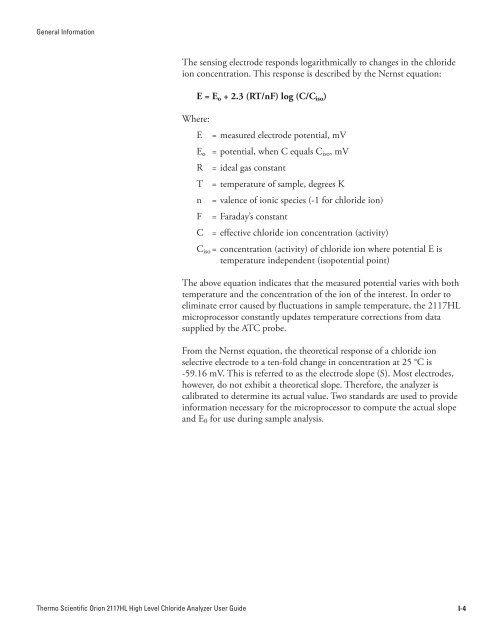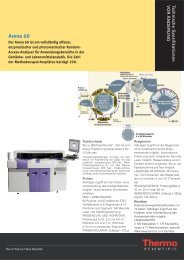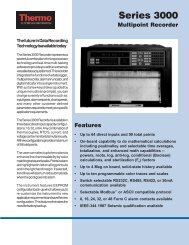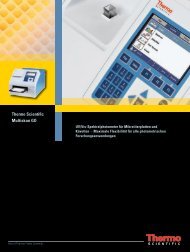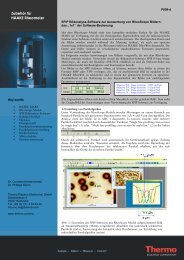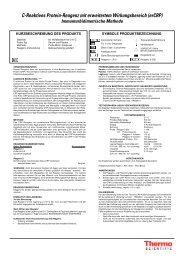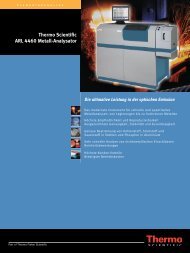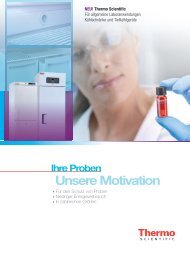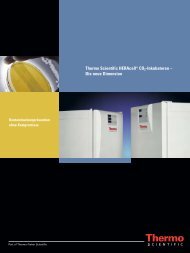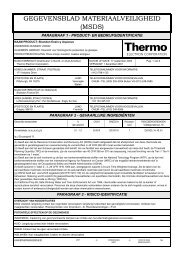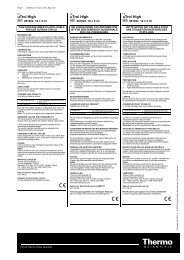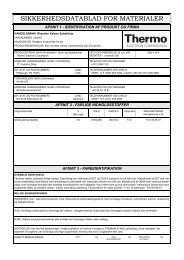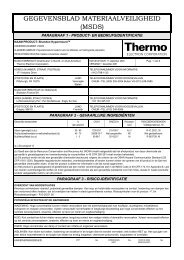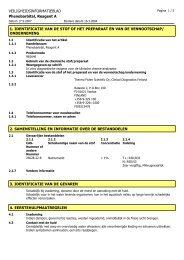Orion 2117HL High Level Chloride Analyzer User Guide
Orion 2117HL High Level Chloride Analyzer User Guide
Orion 2117HL High Level Chloride Analyzer User Guide
Create successful ePaper yourself
Turn your PDF publications into a flip-book with our unique Google optimized e-Paper software.
General Information<br />
Thermo Scientific <strong>Orion</strong> <strong>2117HL</strong> <strong>High</strong> <strong>Level</strong> <strong>Chloride</strong> <strong>Analyzer</strong> <strong>User</strong> <strong>Guide</strong><br />
The sensing electrode responds logarithmically to changes in the chloride<br />
ion concentration. This response is described by the Nernst equation:<br />
Where:<br />
E = Eo + 2.3 (RT/nF) log (C/Ciso)<br />
E = measured electrode potential, mV<br />
Eo = potential, when C equals Ciso, mV<br />
R = ideal gas constant<br />
T = temperature of sample, degrees K<br />
n = valence of ionic species (-1 for chloride ion)<br />
F = Faraday’s constant<br />
C = effective chloride ion concentration (activity)<br />
Ciso = concentration (activity) of chloride ion where potential E is<br />
temperature independent (isopotential point)<br />
The above equation indicates that the measured potential varies with both<br />
temperature and the concentration of the ion of the interest. In order to<br />
eliminate error caused by fluctuations in sample temperature, the <strong>2117HL</strong><br />
microprocessor constantly updates temperature corrections from data<br />
supplied by the ATC probe.<br />
From the Nernst equation, the theoretical response of a chloride ion<br />
selective electrode to a ten-fold change in concentration at 25 °C is<br />
-59.16 mV. This is referred to as the electrode slope (S). Most electrodes,<br />
however, do not exhibit a theoretical slope. Therefore, the analyzer is<br />
calibrated to determine its actual value. Two standards are used to provide<br />
information necessary for the microprocessor to compute the actual slope<br />
and E0 for use during sample analysis.<br />
I-4


